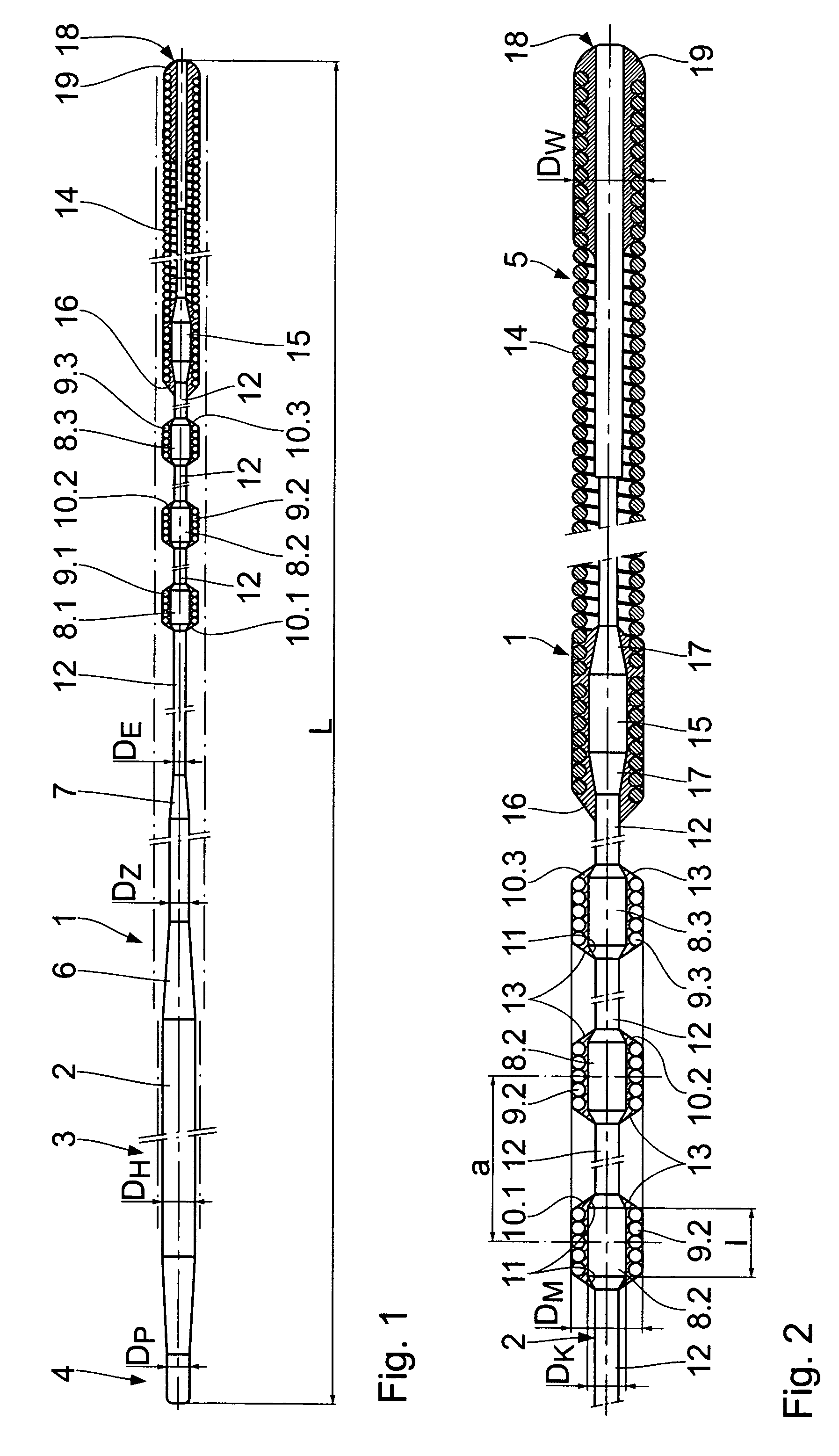Catheter guide wire especially for percutaneous transluminal coronary angioplasty
a technology of catheter guide wires and percutaneous transluminal coronary angioplasty, which is applied in the direction of guide wires, sensors, medical science, etc., can solve the problems of increased susceptibility of the wire shaft to notch breakage, and injury to the vessel wall
- Summary
- Abstract
- Description
- Claims
- Application Information
AI Technical Summary
Benefits of technology
Problems solved by technology
Method used
Image
Examples
Embodiment Construction
[0013]As is apparent from FIG. 1, the guide wire, which has been marked in its entirety with 1, incorporates an elongated wire shaft 2 of medical-grade stainless steel. Shaft sections of varying diameters are provided over its total length L of, for example, 1750 mm. The wire shaft 2 thus has at its proximal end 3, for example, a conically narrowing end section, whose outside diameter DP of, for example 0.223 mm, is significantly smaller than the main diameter DH of the wire shaft 2 of 0.36 mm. The conically narrowing proximal end 3 of the wire shaft 2 serves to attach a wire extension.
[0014]In the distal end zone, whose length may be altogether approximately 300 mm, which is located adjacent to the distal end 5 of the guide wire 5, the wire shaft 2 is reduced in its thickness from its main diameter DH over conical ramps 6, 7 to an intermediate diameter DZ of approximately 0.2 mm and to a final diameter DE of approximately 0.12 mm. In the process, however, core sections 8.1, 8.2, 8....
PUM
 Login to View More
Login to View More Abstract
Description
Claims
Application Information
 Login to View More
Login to View More - R&D
- Intellectual Property
- Life Sciences
- Materials
- Tech Scout
- Unparalleled Data Quality
- Higher Quality Content
- 60% Fewer Hallucinations
Browse by: Latest US Patents, China's latest patents, Technical Efficacy Thesaurus, Application Domain, Technology Topic, Popular Technical Reports.
© 2025 PatSnap. All rights reserved.Legal|Privacy policy|Modern Slavery Act Transparency Statement|Sitemap|About US| Contact US: help@patsnap.com


